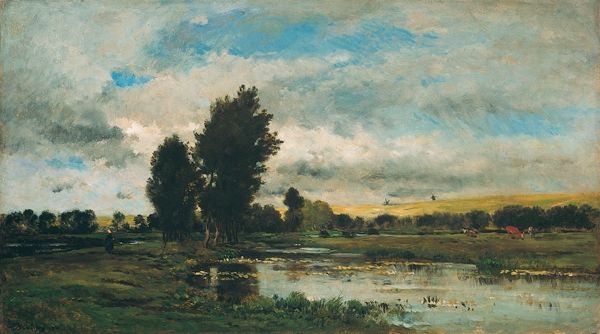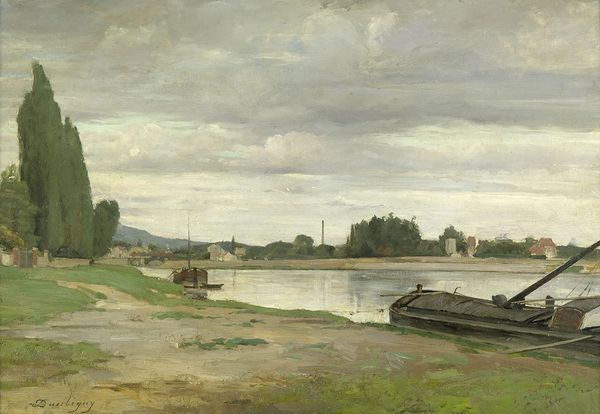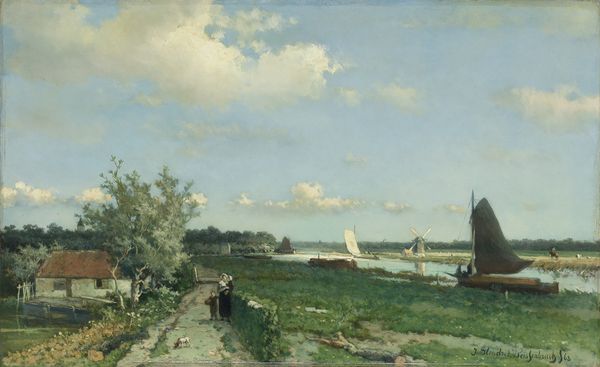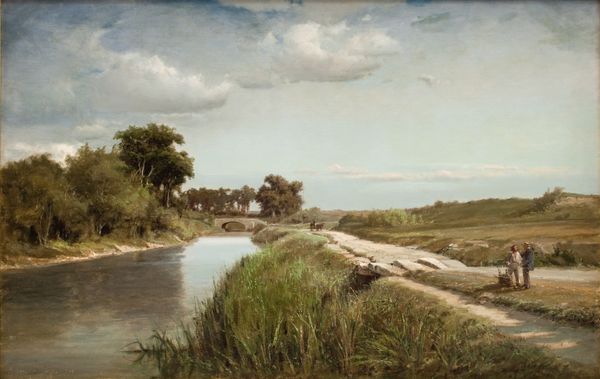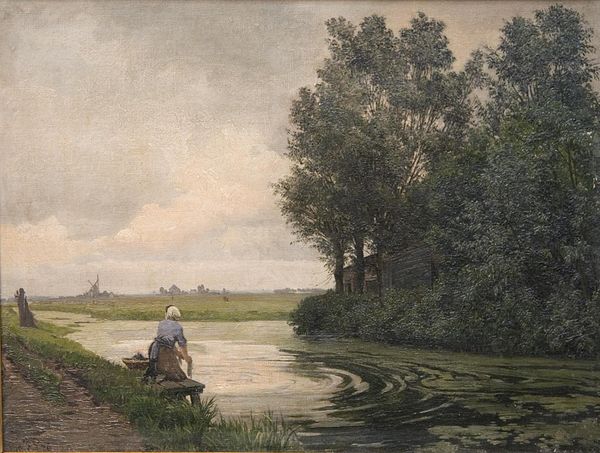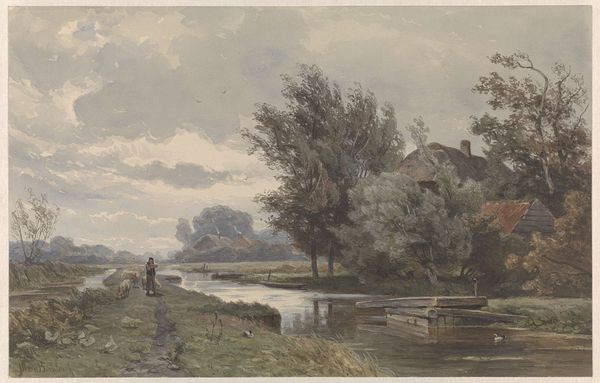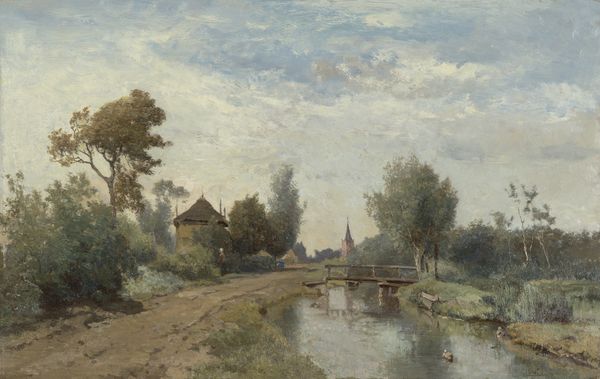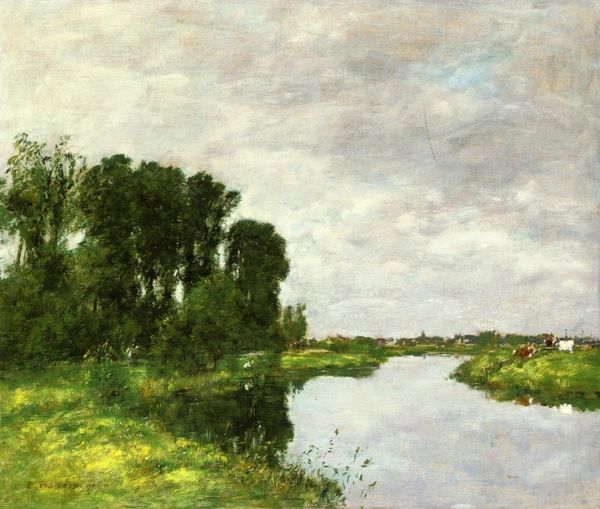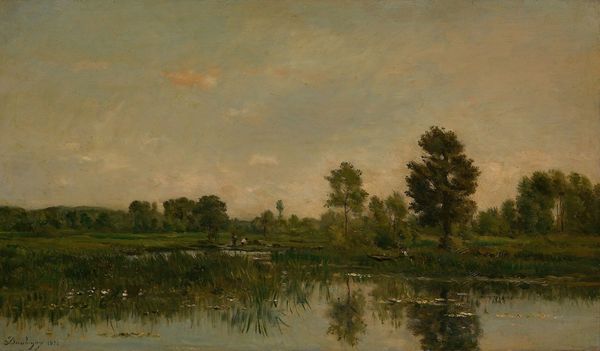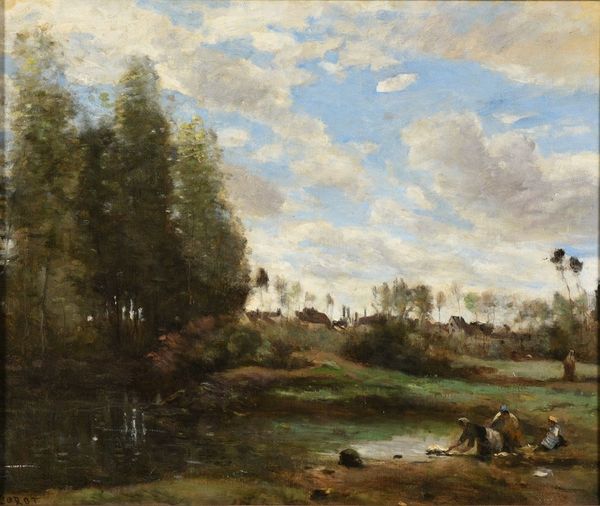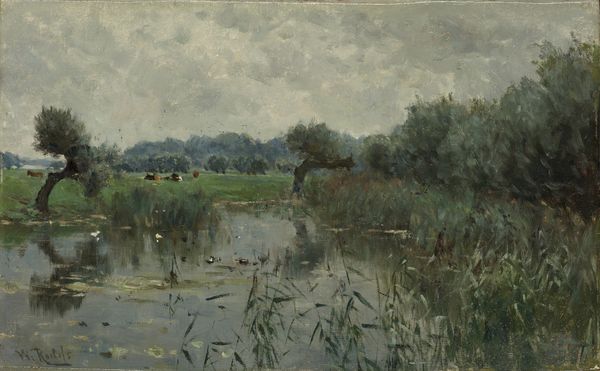
painting, plein-air, oil-paint
#
painting
#
impressionism
#
plein-air
#
oil-paint
#
landscape
#
impressionist landscape
#
oil painting
#
genre-painting
#
realism
Dimensions: height 48 cm, width 75 cm
Copyright: Rijks Museum: Open Domain
Editor: We are looking at "Landscape in the Environs of The Hague" painted around 1870 to 1875 by Willem Roelofs, using oil on canvas. It has such a wonderfully peaceful atmosphere with that cloudy sky dominating the scene, despite being such a large canvas. How do you interpret this work, what elements stand out for you? Curator: This work provides insight into the Dutch landscape tradition, yet also reflects broader socio-economic themes. We see the flattening of the land, the strong horizon line, reflecting a culture wrestling with control of the water and land. This pursuit also defined gender and class structures. Notice how the figures on the path seem almost absorbed by the landscape, anonymous laborers making their way. Do you get a sense of the romanticising of the rural? Editor: I do. There's a beauty here, despite the rather muted palette, that elevates the everyday. Is that connected with Impressionism's focus on the present moment? Curator: Precisely. Realism and Impressionism were emerging as challenges to the academic traditions that promoted history painting and portraiture. They were, in some ways, democratizing art by painting these ordinary subjects, highlighting lives often marginalized. How do you see the role of women depicted here in connection to this? Editor: Interesting to consider the presence of women not as individual portraits of wealth, but as an integral, unacknowledged part of the landscape, walking with what seems to be her child, doing her labour, another cog that makes society works and keeps going... This gives a very different angle, a fascinating perspective! Curator: Indeed. Through his realistic depiction, Roelofs subtly engages with the burgeoning social consciousness of the time, acknowledging the working class in a modernizing Netherlands. Art doesn't exist in a vacuum, right? Editor: Absolutely! Thinking about art in this more interconnected, socially aware way makes my understanding so much richer. Thank you.
Comments
rijksmuseum about 2 years ago
⋮
Together with Jozef Israëls, Roelofs is considered the doyen of the Hague School, even though he lived in Brussels. During the summer he made oil sketches in the environs of The Hague, which he worked up into paintings during the winter in his Brussels studio. Depicted here is the road from The Hague to the village of Stompwijk. The swing bridge across the canal is open to prevent the cattle from escaping.
Join the conversation
Join millions of artists and users on Artera today and experience the ultimate creative platform.
